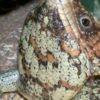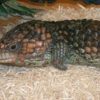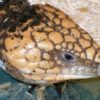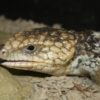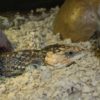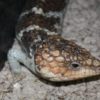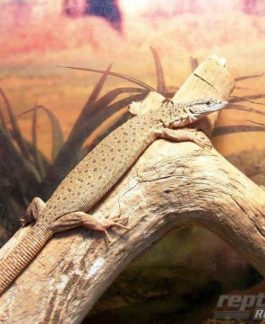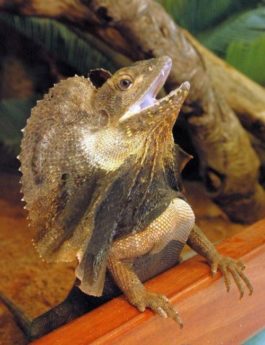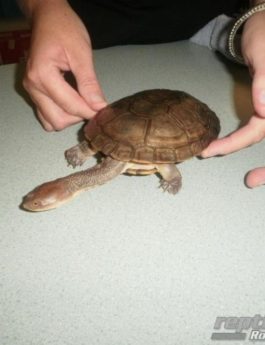Large, very robust Tiliqua with a broad deep triangular head and short blunt tail. Scales extremely large, irregularly-shaped and rugose. Three subspecies recognised. T. r. rugosa: Tail relatively long and slender. Ground colour pale to dark brown, olive-brown, grey to black, usually marked with irregular, broad to narrow cream, yellow, orange to pale grey bands on body and tail. Head usually paler than ground colour, often boldly flushed with orange. Ventral surfaces cream to white, usually bearing irregular greyish to brownish stripes, bands or blotches.
Usually shelters in shallow burrows beneath dead vegetation and surface debris. Otherwise as for genus. Subhumid to arid southern Australia. T. r. rugosa occurs in south-west of range, from about western edge of Nullarbor Plain to lower west coast. Encountered in all terrestrial habitats, though uncommon in wet sclerophyll forests and swamplands. T. r. konowi is restricted to Rottnest Island, WA, on pale sands and limestones supporting low woodland/heathland associations. T. r. asper extends through remaining eastern portion of range, from dry sclerophyll forests to hummock grasslands, chenopod shrublands and sparsely vegetated coastal dunes. Midwestern form is restricted to midwest coast of WA.
Terrarium: Bobtails are a ground dwelling lizard, it is not essential to provide an enclosure with much height, however it is important to have plenty of ground space for them to comfortably move around their enclosure. A terrarium size of 90x45x45 (WxDxH) would be suitable to house 1 large adult, if you wish to house 2 or 3 bobtails 120x60x60 would be better suited. In the warmer months bobtails could be housed in an escape proof outdoor enclosure that receives at least 8 hours of natural sunlight a day, has plenty of shade and a permanent dry area.
Lighting & Heating: Bobtails are primarily diurnal, therefore require high spectrum UVB lighting as well as an intense basking heat source when housed indoors. There are a number of ways to provide UVB, fluorescent 10.0 spectrum tubes or bulbs will provide UVB, a daylight basking heat globe will have to be used in conjunction. A mercury vapour globe will provide intense UVA & UVB light, mercury vapour globes are in our opinion superior to fluorescents as it is a longer lasting globe with more intense UVB output, however they cannot be used with a thermostat so work better with a larger enclosure that will easier maintain a thermal gradient. During the day, you want to achieve a basking ‘Hot Spot’ of 35°C and an air temperature ranging from 35°C in the hot end, and down to 20-25°C in the cool end. A heat rock or heat tile should be provided as tummy heat to help with digestion, this can also be used as a night time heat source. To monitor the temperatures inside the enclosure a thermometer should always be used.
Furnishings: A Bobtail’s enclosure is fairly basic as far as furnishings, they don’t require logs and vines for climbing, however a large log on the ground provides a natural hiding spot. Two large, low hide rocks should be provided, one in the hot end, and one in the cool end with the water bowl. Artificial foliage throughout the enclosure will allow the Bobtail plenty of hiding spots and coverage. A pet bedding wood chips such as Chipsi or Critter Crumble can be used as a substrate.
Food in captivity: Bobtails will eat just about anything offered to them, they should be fed 2-3 times a week, varying their food will ensure a balanced diet. Their diet should include a variety of fruits and vegetables. Small mice, raw meat and canned pet food should be given in moderation, calcium and vitamin supplements should occasionally be added to their food.
The essentials:
- Terrarium of appropriate size
- High spectrum UVB lighting
- Daytime Basking globe
- Thermometer
- Ground heat
- Water bowl & Food bowl
- Substrate
- Large hide rocks
- Foliage for shelter
- Calcium and vitamin supplements


